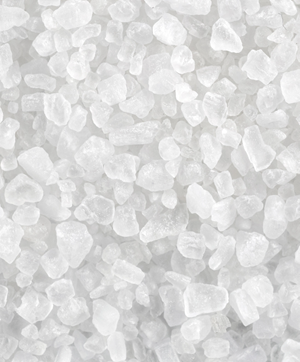Molder Cuts Post-Purge Costs and Downtime in Half
By switching to a new purging compound, IMCO now can complete a changeover in 10 min.
Plastics processors are always looking for ways to make purging more efficient and less costly. Even when a solution seems to be working well, something new may come along that changes their standards of performance. That was the case with IMCO in Rochester, N.Y., a custom injection molder of a broad array of products, among which are clear polycarbonate lenses and window-track components made with black 33% glass-reinforced nylon 6. The company operates 22 molding presses from 40 tons to 720 tons in its 28,500-ft2 plant.
Maintenance manager Todd France says the company had been using the second generation of Dyna-Purge M purging compound, introduced in 2011 by Dyna-Purge Div. of Shuman Plastics. France considered that product quite effective, but when their Dyna-Purge representative gave them a sample for testing of the new Dyna-Purge D2 launched last year, France reports “it cut our post purge costs and downtime in half”
Both are non-abrasive, mechanical, thermoplastic-based compounds. However, D2 is said to be based on a unique technology that scrubs, cleans, and removes contamination without leaving residue. It contains one proprietary component that contributes high-shear tolerance, creating a more viscous flow to the boundary layers, while another ingredient acts as a pressurizing agent allowing for the purge to reach into flow-stagnation points. In addition, encapsulated fine particles target degraded material adhering to the surface of machine components.
This dynamic “triple-action” innovation is said to thoroughly clean and remove material from the screw and barrel as well as the tool or die. It can be used for purging all types of resins, and its wider temperature range of 350-625 F is suited for use in injection molding, extrusion, compounding, and blow molding.
IMCO purges its equipment up to four times/week for color changes or whenever there is any question of possible contamination, according to France. IMCO often uses some of the more hard-to-purge resins, such as nylon, PP, PET, and polyetherimide (PEI). By switching to the D2 purging compound, IMCO now can complete a changeover in 10 min. The company has also reduced scrap by 50% while transitioning to the next production resin.
France says the D2 compound generates a lot less odor and smoke and is particularly easy to use. He has found it even more effective if it is loaded into the screw and barrel and left to “cook” for about 8 min. “It seems to expand in that short time, before I hit purge. Afterwards, you can get it off the screw simply with an air nozzle. It falls right off, eliminating about five steps you’d need with a purging compound that is stuck on the screw.”
France says he typically uses less than 1 lb of this purging compound for IMCO’s 80-ton machines and 5-10 lb for the 720-tonner. Referring to his experience with other purging compounds, he adds, “I don’t want to be spending 4 hr on any one machine. The reduction in downtime means we can up our production.”
An independent study conducted last year by the University of Akron’s Institute of Polymer Science and Polymer Engineering in Akron, Ohio, compared the most widely used commercial purging compounds. Trials were conducted on a 55-ton Van Dorn injection machine using PP, ABS, and nylon 66.
Results showed Dyna-Purge D2 to be more effective than chemical or abrasive-type mechanical purging compounds, resulting in faster cleaning and less downtime. It was also the only purging compound that, for each of the three resins, after 150 g of purge, both the purge compound and the post-purge resin were clean and free of contamination.
Related Content
Asahi Kasei Plastics North America Welcomes New President and COO
With APNA’s president and COO Todd Glogovsky’s retirement April 1, his successor will be v.p. of commercial sales Phani Nagaraj
Read MoreReduce Downtime and Scrap in the Blown Film Industry
The blown film sector now benefits from a tailored solution developed by Chem-Trend to preserve integrity of the bubble.
Read MoreBest Practices for Purging PHA and PHA/PLA Blends
Because bioplastics are processed at lower temperatures, purging between jobs requires a different process and purging agents than those applied for traditional resins.
Read MoreCast Acrylic Purging Compound
Mechanical purging compound comes in granulate form, enhancing handling, storage and grittiness for cleaning.
Read MoreRead Next
Making the Circular Economy a Reality
Driven by brand owner demands and new worldwide legislation, the entire supply chain is working toward the shift to circularity, with some evidence the circular economy has already begun.
Read MoreFor PLASTICS' CEO Seaholm, NPE to Shine Light on Sustainability Successes
With advocacy, communication and sustainability as three main pillars, Seaholm leads a trade association to NPE that ‘is more active today than we have ever been.’
Read More




















